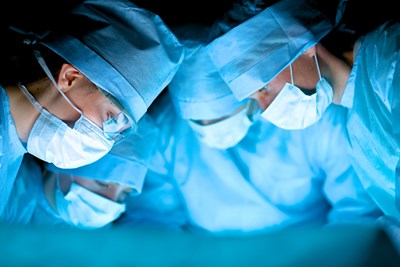An aneurysm is a weakened, ballooned spot in the wall of a blood vessel. The abnormal bulge can rupture and cause internal bleeding that can lead to death. Ruptured aneurysms cause over 13,000 deaths each year in the United States. Aneurysms can occur in any blood vessel throughout the body; however, they are most common in the brain, aorta, legs, and spleen.
Types of Aneurysms
There are many different types of aneurysms that can occur. However, the most common types of aneurysms include:
- Brain aneurysm: This type of aneurysm occurs in the blood vessels that supply blood to your brain, typically at a point where multiple arteries are branching out. The weakened part of the artery will form a sac that fills with blood. If a brain aneurysm ruptures, it can cause bleeding into your brain, a potentially deadly condition called a subarachnoid hemorrhage. However, many brain aneurysms are small and at low risk for rupturing, especially if they are located in the front of your brain.
- Aortic aneurysm: Your aorta is a major blood vessel that carries blood from your heart to your vital organs. When an aneurysm forms in your aorta, you normally don’t experience any symptoms because the artery is the size of a garden hose, so even large aneurysms can go unnoticed. If the aneurysm splits or ruptures though, this can cause internal bleeding that often leads to death. Aortic aneurysms can occur in the chest (thoracic aortic aneurysms), in the abdomen (abdominal aortic aneurysms), or in the area between your chest and abdomen (thoracoabdominal aortic aneurysms).
- Other aneurysms: You can also experience aneurysms in the arteries that are located behind your knees, in your spleen, or in your intestines.
Aneurysm Symptoms
Depending on the type and location of the aneurysm, symptoms will vary. Most aneurysms that occur in the brain or body will not present symptoms at all until they rupture. However, aneurysms that form near the surface of the skin will sometimes show signs of swelling and pain. If an aneurysm ruptures, the symptoms will include:
- Pain
- Bleeding
- Dizziness
- Increased heart rate
If you experience any of these symptoms, seek medical attention immediately. Ruptured aneurysms can cause serious complications and death if not treated with emergency care as soon as possible.
Diagnosing Aneurysms
Many times, aneurysms are discovered accidentally while doctors are looking into other health problems. Aneurysms are commonly diagnosed using computerized tomography (CT) scans and ultrasound methods. These methods show the condition of your blood vessels including any bulges, weak spots, or blockages that they may have.
If you are diagnosed with an aneurysm, your doctor will likely refer you to a specialist such as a cardiothoracic or vascular surgeon to help you determine the next steps of your treatment plan.
Aneurysm Treatments
Treatment for aneurysms will also depend on the type, location, and severity of the aneurysm. It can include surgery, medications, or simply monitoring the aneurysm to ensure it is not at risk for rupturing.



